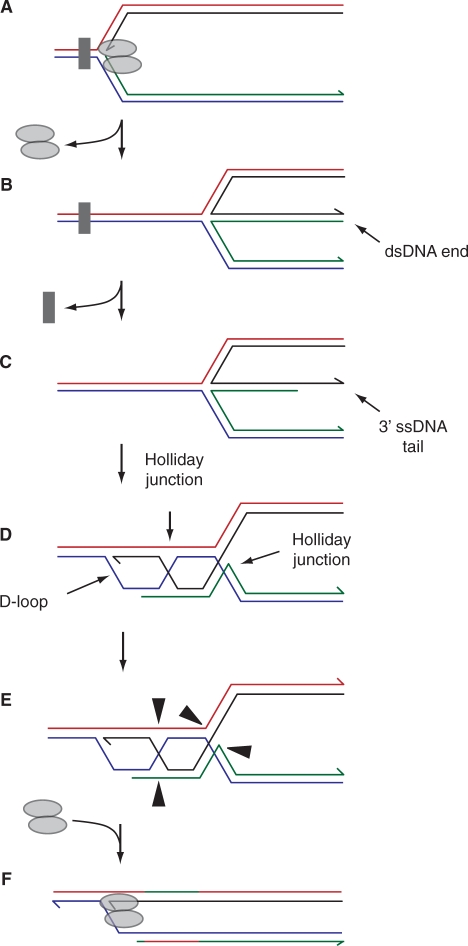Figure 8.
Regression followed by recombination of the extruded dsDNA end. Any exonucleolytic processing of the dsDNA end generated by fork regression might result in generation of a 3′ ssDNA tail rather than complete degradation (A–C). Recombination between this ssDNA and the homologous sequence in the reformed parental duplex would result in formation of a D-loop linked to two Holliday junctions (D). Cleavage of the two linked Holliday junctions by resolvases (as shown in E) or dissolution by a RecQ-type helicase in conjunction with a topoisomerase, coupled with reassembly of the replisome at the D-loop would restore a replication fork (F).

